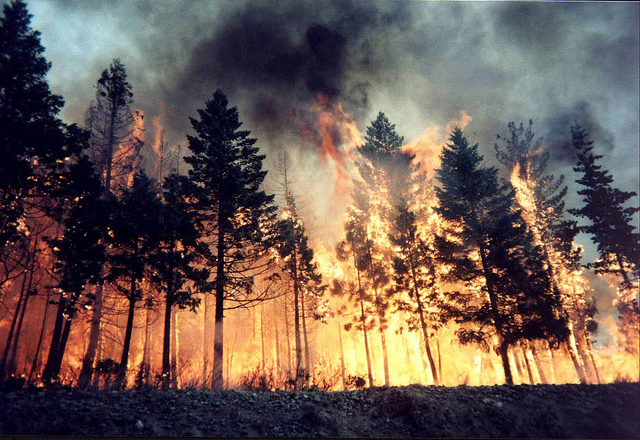
By Elise Brown and Chuck Gill, Penn State
UNIVERSITY PARK – This season’s devastating wildfires in the western United States may seem far away, but understanding how homeowners, even those in the East, perceive wildfire can help Western states better prepare for saving homes, according to a social forestry expert in Penn State’s College of Agricultural Sciences.
Al Luloff, professor of rural sociology and human dimensions of natural resources and the environment, said that understanding risks and concerns related to wildfire is essential.
“Our forests are more than trees,” he said. “They’re fresh air and clean water, which lead to abundant fish and wildlife. By studying perceptions of wildfire risk, we can help save communities and people.”
With colleagues from Mississippi State University and Cornell University, Luloff conducted interviews with community members about perceptions of wildfire risk and actions taken to prevent or minimize it. Researchers interviewed residents in five Northeastern states, including Pennsylvania. The findings were described in an article recently published in the Journal of Forestry.
Results showed that 40 percent of those interviewed believed their communities were unaware of the wildfire dangers and therefore unconcerned about the issue. The highest percentage of unaware and unconcerned residents was in Pennsylvania.
Luloff said wildfires in the Northeast are not frequent but can be as devastating as those in the West. Much of the land there is government-owned, but a majority of the forestland in the East is under private ownership.
There are 17 million acres of forestland in Pennsylvania, with 12 million of those acres owned by private individuals and investors. Forty percent of private forestland owners in the commonwealth own less than 10 acres, and many of these people own only 1 or 2 acres of forest.
With the popularity of seasonal recreation in forested areas, such as the Poconos, many people have winterized their summer and/or seasonal homes and have become permanent residents. This development in nonmetropolitan areas dominated by woods and other natural amenities has contributed to the pattern known as the “wildland-urban interface,” Luloff said. More homes in the woods and nonmetropolitan areas were built, and many gated communities emerged.
Often, the result of this development pattern has led to a culture clash between traditional forestry, timber and logging industries and new residents who built homes in forested areas. This new public is far less familiar with forestry practices.
Seeing forest management practices that they may not understand leads to misunderstandings and possibly criticism from the public, according to Luloff. Also, a lack of concern about wildfire could lead to increased risk due to a lack of preparedness.
Luloff said the recent Colorado wildfires resulted in the loss of around 400 homes.
“That’s a tragedy no matter how you cut it,” he said. “Plus, people died on the ground and while fighting it.”
A fire of similar proportion east of the Mississippi River would be devastating to homeowners, Luloff continued. Much of the land in the East is forested, and there are many places where thousands of homeowners live under that forest canopy.
Large fires in the Northeast are uncommon and people tend not to associate Western experiences with where they live. However, changing forest and climate conditions — combined with more people living in and close to forests — may change Eastern conditions and increase risk.
“People who are close have a different level of awareness or concern,” he said. “Those far away are still concerned, but it’s not in their backyard. There are very different concerns here than where people have dealt with forest fire forever. We can live with it or without it and do the same thing: nothing or something.
“It’s not a benign issue — doing nothing is doing something,” he continued. “The question is, how can we get people to do a lot and minimize the risk of wildfire?”
The study was funded by the U.S. Forest Service.